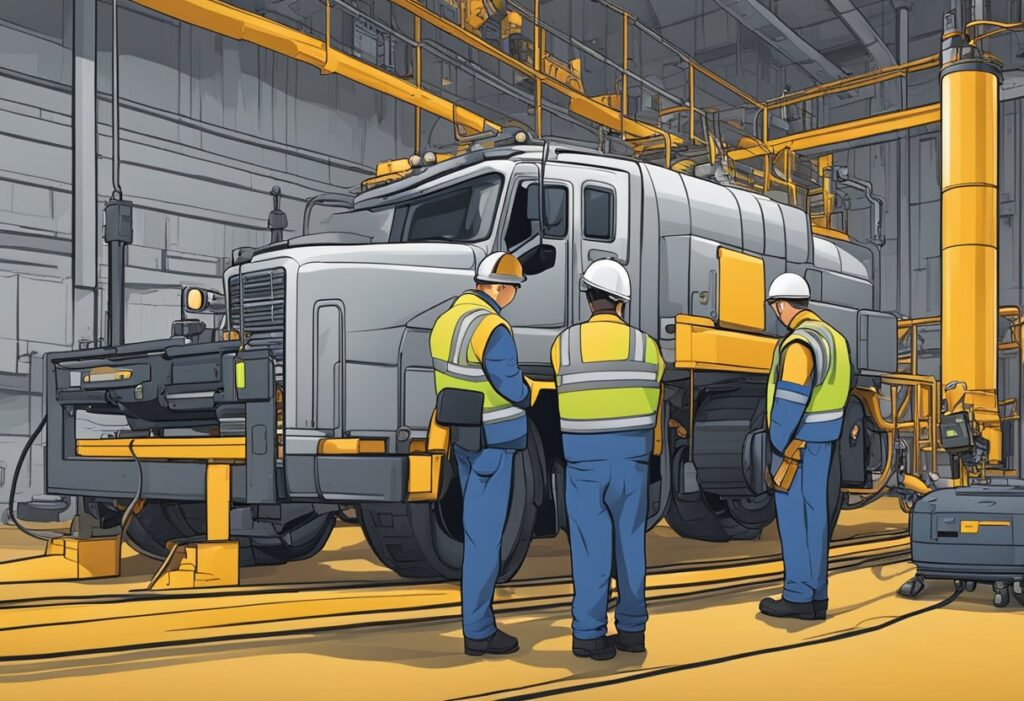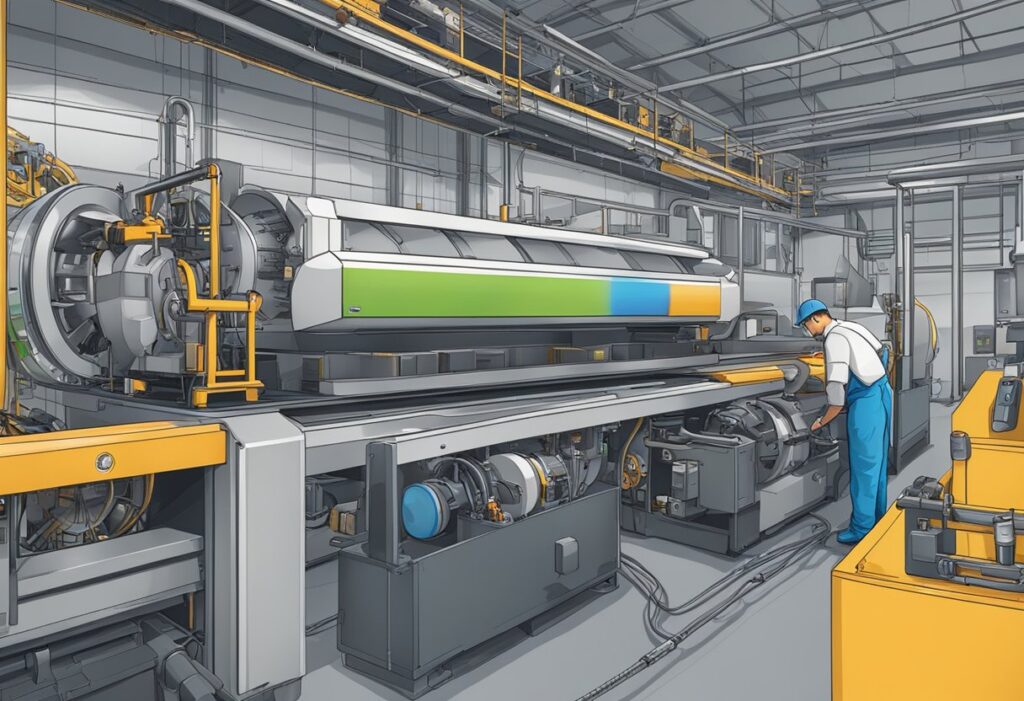AI in Business: Transforming Predictive Maintenance

In the dynamic world of AI and business, predictive maintenance has emerged as a groundbreaking innovation, revolutionizing how companies manage their assets and operations. By leveraging artificial intelligence (AI), businesses can anticipate equipment failures, reduce downtime, and enhance operational efficiency. This comprehensive guide explores the technologies, implementation processes, applications, challenges, and future trends of AI-driven predictive maintenance, providing valuable insights for businesses aiming to stay ahead of the curve.
Understanding Predictive Maintenance
Predictive maintenance involves using data-driven insights to predict and prevent equipment failures before they occur. This proactive approach contrasts with traditional reactive maintenance, where repairs are made after equipment has already failed.
- Evolution from Reactive to Predictive Maintenance: Traditionally, businesses relied on reactive maintenance, fixing issues only after they caused downtime. With AI, maintenance has evolved to a predictive model, where data analytics and machine learning anticipate problems, allowing for timely interventions.
- Key Benefits:
- Reduced Downtime: Prevent unexpected equipment failures, ensuring continuous operations.
- Cost Savings: Minimize maintenance costs by addressing issues before they escalate.
- Enhanced Safety: Prevent accidents and improve workplace safety by maintaining equipment reliability.
- Extended Equipment Lifespan: Regular maintenance based on predictive insights extends the life of machinery and equipment.
Core Technologies in AI-Driven Predictive Maintenance
- Machine Learning (ML)
- ML algorithms analyze historical and real-time data to identify patterns and predict future equipment failures.
- Applications: Predictive analytics for machinery health, anomaly detection, and maintenance scheduling.
- Internet of Things (IoT) and Sensors
- IoT devices and sensors collect real-time data from equipment, providing continuous monitoring of operational conditions.
- Applications: Monitoring temperature, vibration, pressure, and other critical parameters.
- Big Data Analytics
- Analyzing large volumes of data to uncover trends, correlations, and insights that inform maintenance strategies.
- Applications: Data-driven decision-making, performance optimization, and risk assessment.
- Cloud Computing
- Cloud platforms enable scalable data storage and processing, facilitating the analysis of large datasets.
- Applications: Real-time data processing, remote monitoring, and centralized data management.
- Digital Twins
- Digital twins are virtual replicas of physical assets, allowing for simulation and analysis of equipment behavior.
- Applications: Testing maintenance scenarios, optimizing performance, and predicting failures.
Implementation Process
- Defining Business Objectives
- Identifying Key Goals and Assets to Monitor: Determine which assets are critical to operations and can benefit from predictive maintenance.
- Aligning Predictive Maintenance with Business Strategy: Ensure that maintenance objectives support broader business goals, such as cost reduction and operational efficiency.
- Data Collection and Integration
- Gathering Data from Various Sources: Collect data from sensors, historical maintenance records, and operational logs.
- Ensuring Data Quality and Consistency: Implement data cleansing and standardization processes to ensure accurate and reliable data inputs.
- Developing and Training Predictive Models
- Selecting Appropriate Machine Learning Algorithms: Choose algorithms based on the specific requirements of the predictive maintenance application.
- Training Models with Historical and Real-Time Data: Use a combination of historical data and real-time inputs to train models, improving their predictive accuracy.
- Deployment and Monitoring
- Implementing Models in Operational Processes: Integrate predictive models into existing maintenance workflows.
- Continuous Monitoring and Refinement of Models: Regularly review model performance, making adjustments to improve accuracy and reliability.
Use Cases and Applications

- Manufacturing
- Equipment Health Monitoring: Continuously monitor machinery to detect signs of wear and tear.
- Reducing Downtime and Optimizing Maintenance Schedules: Schedule maintenance activities based on predictive insights to minimize disruptions.
- Transportation
- Vehicle Maintenance and Fleet Management: Monitor the health of vehicles in real-time, predicting and preventing breakdowns.
- Enhancing Safety and Reliability: Ensure the safety and reliability of transportation fleets by maintaining vehicles proactively.
- Energy Sector
- Monitoring Power Plants and Grid Infrastructure: Use predictive maintenance to ensure the continuous operation of power plants and grid systems.
- Preventing Outages and Improving Efficiency: Anticipate and address potential failures to maintain a stable energy supply.
- Healthcare
- Maintaining Medical Equipment: Ensure the reliability and safety of critical medical devices through predictive maintenance.
- Ensuring Reliability and Safety of Devices: Prevent equipment failures that could impact patient care and safety.
- Facility Management
- HVAC Systems and Building Infrastructure: Monitor and maintain heating, ventilation, and air conditioning systems to ensure optimal performance.
- Reducing Operational Costs and Energy Consumption: Improve energy efficiency and reduce operational costs through proactive maintenance.
Challenges and Solutions
- Data Privacy and Security
- Ensuring Compliance with Regulations: Adhere to data protection laws such as GDPR and CCPA.
- Implementing Robust Security Measures: Protect sensitive data from breaches and cyber threats through encryption and secure access controls.
- Data Quality and Integration
- Addressing Data Inconsistencies and Gaps: Ensure data accuracy and completeness by implementing data validation and cleaning processes.
- Ensuring Seamless Data Integration: Integrate data from various sources to create a unified view of asset health.
- Model Accuracy and Reliability
- Regularly Updating and Testing Predictive Models: Continuously improve predictive models to maintain their accuracy and relevance.
- Handling False Positives and Negatives: Develop strategies to manage and mitigate the impact of incorrect predictions.
- Change Management
- Training Staff to Work with New Technologies: Provide comprehensive training programs to help employees adapt to new tools and processes.
- Managing Resistance to Change: Communicate the benefits of predictive maintenance and involve employees in the transition process to reduce resistance.
Future Trends

- Advancements in AI and Machine Learning
- Ongoing developments in AI and machine learning will enhance the predictive capabilities of maintenance systems, making them more accurate and reliable.
- Increased Adoption of Digital Twins
- The use of digital twins will become more widespread, allowing for more detailed simulations and analyses of asset behavior.
- Integration with Augmented Reality (AR) and Virtual Reality (VR)
- AR and VR technologies will provide immersive maintenance training and real-time guidance for technicians.
- Expansion of Predictive Maintenance Across Industries
- Predictive maintenance will continue to expand beyond traditional industries, finding applications in new areas such as smart cities and consumer electronics.
Conclusion
AI is revolutionizing predictive maintenance in business, offering unparalleled efficiency, accuracy, and reliability. By leveraging advanced technologies and implementing them strategically, businesses can transform their maintenance practices, gaining a competitive edge in the market. As AI continues to evolve, its impact on predictive maintenance will only grow, paving the way for innovative and resilient business practices.
Hyperlinks: